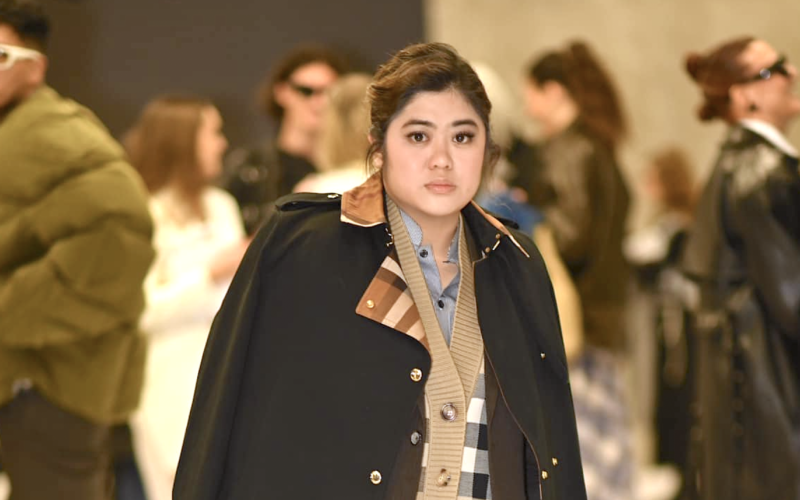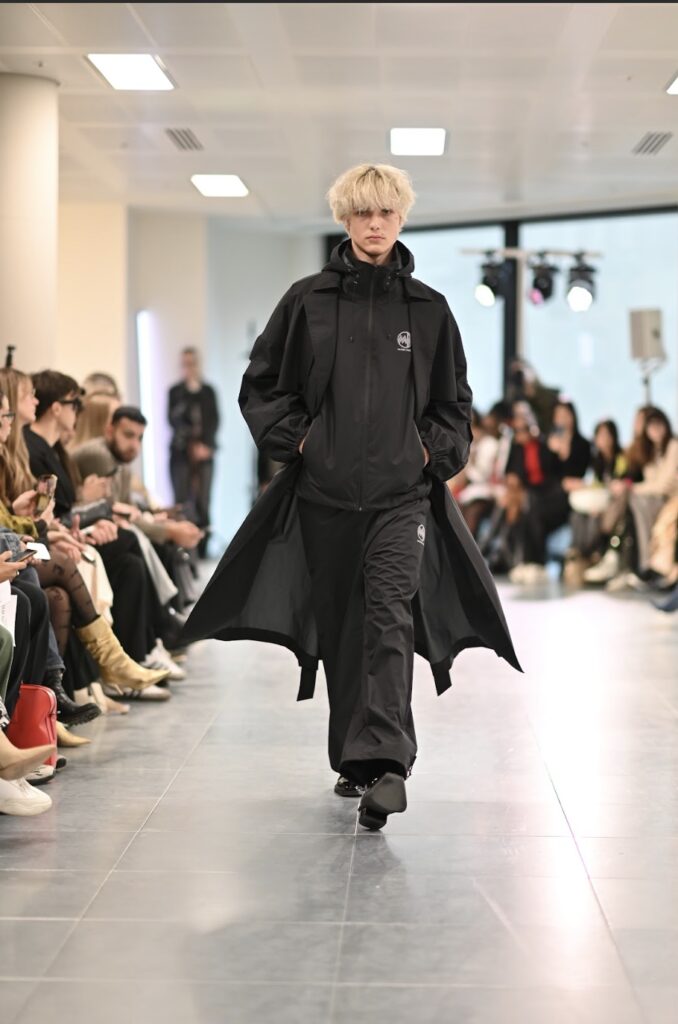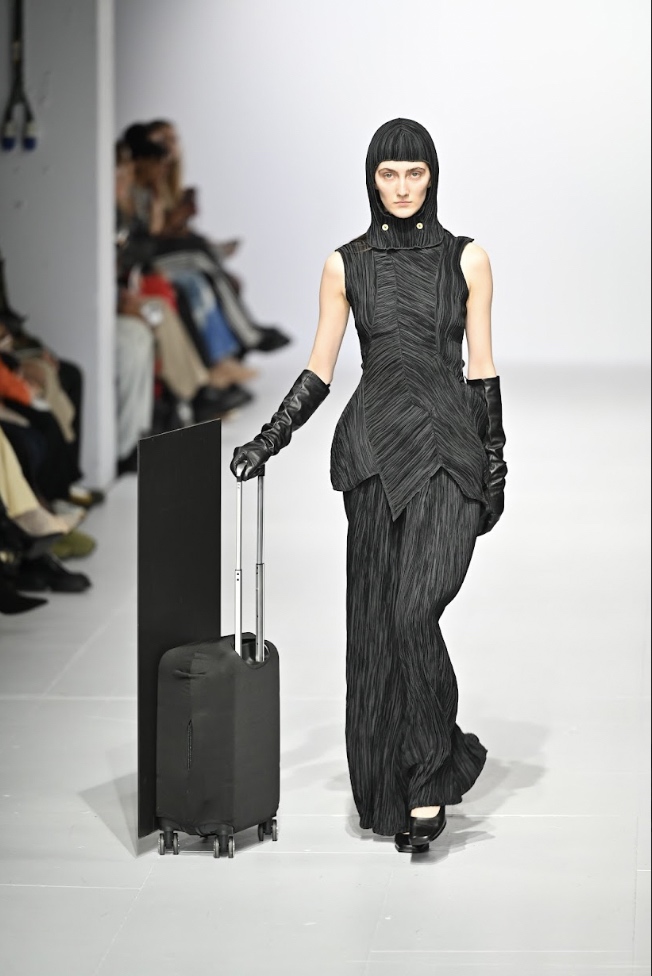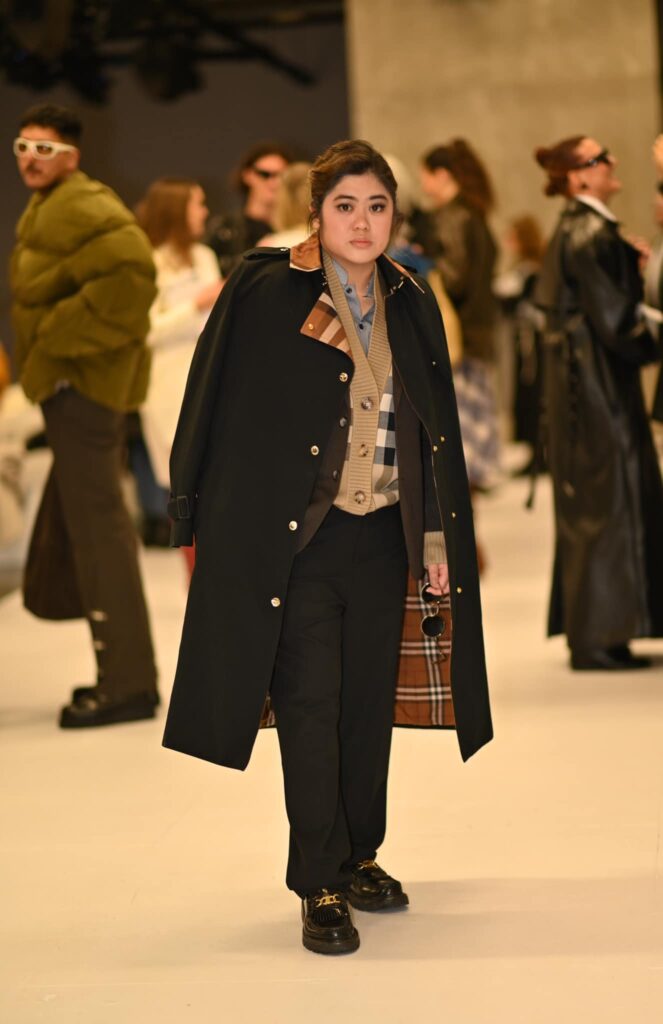While taking a break from public service and pursuing her master’s degree in Cities, Anna Mae Lamentillo found herself at the heart of London’s fashion scene — the 40th anniversary of London Fashion Week, no less.
“To be completely honest, my journey to the front row of various shows at London Fashion Week started from the second row,” says Anna Mae, who is currently studying at the London School of Economics. “By building connections, exploring different perspectives, and following my passion for understanding urban life, I gradually found myself moving closer to the front row of LFW,” she tells PeopleAsia.
Indeed, taking a leave to focus on learning and personal growth has been transformative for this millennial, who soon found herself watching some of London’s hottest runways. “My favorite shows were Burberry, Tolu Coker and Mark Fast. However, what truly resonated with me on a profound level was the representation of the experiences of Ukrainian men and women through the designs showcased on the runway. It was a moving display that highlighted the significant role of fashion as a medium for storytelling and social commentary,” says Anna Mae, who wore Burberry, Moncler and Martin Bautista to these shows.
Among her favorites were Tamar Keburia, one of the designers from Ukraine, who notably featured a person with disabilities as a model on the runway. Also on top of her list were J’amemme, and Andreas Moskin,who demonstrated a deep understanding of how fashion can be a powerful tool for expressing narratives and shedding light on important societal issues. “Their collections not only showcased creativity and craftsmanship but also conveyed meaningful messages that left a lasting impact on me. It was a beautiful fusion of art, culture, and advocacy, making it a standout moment for me during London Fashion Week,” she adds.
A whole new world
When Anna Mae first witnessed LFW, she held onto the misconception that everyone in the industry had to fit a certain mold — thin, tall, fair. However, a few days in these shows quickly proved otherwise. “Fashion, I learned, is not about conforming to a narrow definition of beauty, but rather about self-expression. It is a medium through which individuals can showcase their unique personalities and styles. Similarly, beauty is not limited to physical attributes like height or skin color. True beauty emanates from confidence, from being comfortable in your own skin and embracing your individuality,” she says.
While she may be a newbie in the London Fashion scene, Anna Mae has enjoyed her fair share of designer shows here in the Philippines. And while she definitely believes that Filipino talent can compete with the rest of the world — London or otherwise — she also notes a couple of differences on how fashion events are handled locally and abroad.
“The difference lies in the level of government institutionalization, incentives, and subsidies provided to fashion designers to stage large-scale global events. While Filipino designers are known for their world-class artistry and workmanship, the disparity in governmental support plays a crucial role in distinguishing these two fashion platforms,” she explains.
London Fashion Week, for one, benefits from a well-established system of government institutionalization and support for the creative industries, including fashion. Programs like NewGen and the London Fashion Showcasing Fund, facilitated by the British Fashion Council, play a key role in aiding young and emerging designers to showcase their work on an international stage. The level of government support spans from the city to the national level, demonstrating a comprehensive approach to nurturing and promoting the arts, culture, and creative sectors in the UK.
With the fashion shows and after-parties having now drawn to a close, Anna Mae, who spent most of the past decade “Build, Build, Build-ing” in Manila, came to this conclusion. “By formalizing and investing more resources into the creative industries, the Philippines could potentially enhance its fashion ecosystem, empower local talent, and elevate its presence in the global fashion landscape. Establishing governmental departments like the UK’s Department for Culture, Media, and Sports, with a focus on tourism, leisure, and creative industries, can pave the way for sustained growth and recognition of the fashion industry at a national and international level,” she ends. —by Jose Paolo dela Cruz








